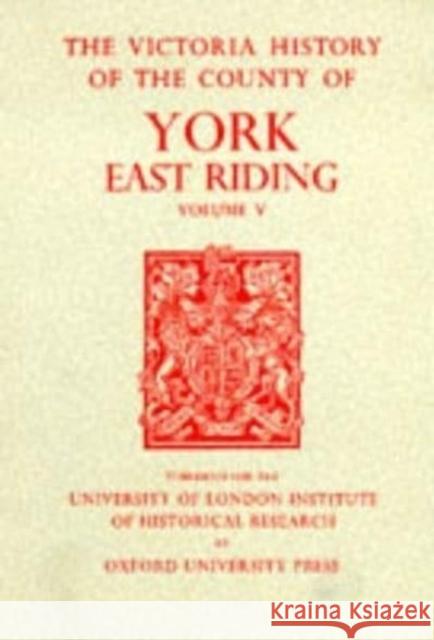A History of the County of York East Riding, Volume V: Holderness: Southern Part » książka
A History of the County of York East Riding, Volume V: Holderness: Southern Part
ISBN-13: 9780197227602 / Angielski / Twarda / 1984 / 257 str.
The volume tells the stories of eighteen parishes in the southern part of Holderness wapentake, the wedge of Yorkshire between the North Sea and the Humber. The low--lying landscape has changed repeatedly during the historical period, with lands along the north bank of the Humber being washed away or growing, lesser watercourses silting up, new drains being made, the steady erosion of the cliff along the sea coast, and the cyclical breaching, destruction, and redeposit of the long spit of land at Spurn Head. The church of Kilnsea and several small settlements have gone with the receding cliff. Sunk Island, which forms part of the Crown Estate, is a parish consisting entirely of new ground thrown up by the Humber. In the Middle Ages the land comprised the liberty of Holderness, with a centre at Burstwick manor house, and belonged to the counts of Aumale before passing to the Crown. The counts' extensive privileges in Holderness included the right to exclude the royal sheriff. Within the parish of Preston a medieval borough was established by the count at Hedon, but access for ships from the Humber was difficult and the town later decayed; it is noteworthy for its magnificent church, dubbed 'the king of Holderness'. Another borough and port established by the count was Ravenser Odd, at Spurn head, but that was later destroyed by the sea. There was a haven also at Patrington, a large village distinguished by its fine 14th-century church, 'the queen of Holderness'. In the part of the area near Hull, Thorngumbald, in Paull parish, and Keyingham have grown into large dormitory villages. Withernsea, in Hollym and Owthorne parishes, was developed from the 1850s as a seaside resort used mainlyby residents of Hull. Other places of which the volume contains accounts are Easington, Halsham, Holmpton, Ottringham, Skeffling, Welwick, and Winestead.











